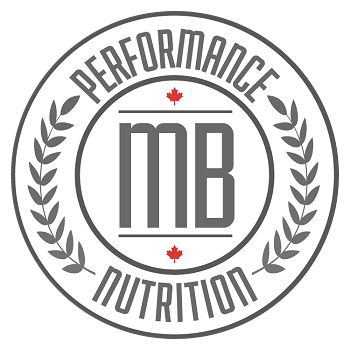Last updated on November 27th, 2024
Why Tissue Health is Important for OCR Athletes
As an active OCR athlete, your tissue health should be a top priority so that you can remain injury free and train hard and achieve your racing goals.
Did you know that the most abundant tissue in the body, which is also extremely important for anyone who works out, is none other than “connective” tissue?
Connective tissue “connects” things in your body to help maintain structure. It basically supports and anchors parts together.
For example, your joints have ligaments (that attach bones to each other), as well as tendons (that attach muscles to bones). These are examples of “dense” connective tissue made mainly of collagen.
Your joints also have cartilage and fluid to “cushion” the ends of the bones when you move so they don’t rub against each other and cause pain or “wear and tear”. Cartilage and fluid are also part of your connective tissue.
Basically, connective tissue is composed of collagen and elastic fibers (elastin), cartilage, other specialized cells, with a healthy dose of cushioning fluid too.
All connective tissue is super-important for a well-functioning body, and of course, there are certain key foods and nutrients that support optimal tissue health! And because some parts of your joints don’t have a huge blood supply, they can take months (or longer) to heal after an injury.
So, let’s make sure that you’re constantly supplying your joints (and the rest of your body) with ample nutrition to make them as robust as possible!
Let’s go over a few top foods for your tissue health.
Protein for Tissue Health
You heard me mention collagen and elastin above, and you probably won’t be surprised to know that they are made of protein!
So, of course consuming enough protein is incredibly important for optimal tissue health.
Protein itself is made up of a bunch of amino acids strung together. When we eat them, our digestive enzymes break down that “string” so that you can properly absorb and digest the individual amino acids. Your body uses those amino acids to create the myriad of proteins that it needs. Yes, things like muscle, bone, and skin; and also important connective tissues like collagen and elastin. Eating enough essential amino acids is key.
Examples of protein-rich foods:
- Eggs, legumes, and minimally-processed meats
Anti-Inflammatory Fats (omega-3s) for Tissue Health
We all know that omega-3s are good for you. They are “essential” for good health and have been researched quite a bit for their potential to lower the risk of many heart and brain issues. One way omega-3s help us is because of their anti-inflammatory properties.
The problem is that most people simply don’t get enough essential omega-3s.
What foods should you eat more of to get your daily supply of omega-3s?
- Fish, shellfish, algae, nuts (particularly walnuts), & seeds (especially flax, chia & hemp)
Antioxidant and Anti-inflammatory Plants for Tissue Health
You totally know that eating plants is good for you! And if you don’t, you likely haven’t been reading my blog enough *wink, wink*.
One of the many reasons why is that they contain antioxidant and anti-inflammatory compounds. Not to mention the fact that many are vitamin and mineral powerhouses as well.
You know that inflammation is part of so many short-term and long-term health concerns, including joint pain.
Which plants have the most anti-oxidants?
- Colourful ones! Eat the rainbow by choosing from a variety of colourful plants (think: red, orange, yellow, green, and purple)
- Blueberries, grapes, green tea, & cocoa (yes, you read that right…unsweetened cocoa of course!)
Foods Rich in Vitamin C
You remember that collagen is a critical part of your connective tissue, especially in joints. You also remember that you need protein amino acids as building blocks to make the collagen.
Vitamin C is a critical “assistant” that helps your enzymes make the collagen from those amino acids that you get when you eat protein.
So, vitamin C works hand-in-hand with protein for healthy collagen in your tissues.
Vitamin C is also an antioxidant, and since exercise can cause increased production of free radicals, antioxidant nutrients are extra-important for tissue health.
Foods rich in vitamin C include:
- Guava, red bell pepper, broccoli, green bell peppers, strawberries, grapefruit, kohlrabi, papaya, Brussels sprouts, kiwi, mango, & oranges
Water and Tissue Health
Of course, since your connective tissues and joints need enough fluid to cushion them, water is another essential “food” for tissue health.
When you’re exercising, slight dehydration (from sweating) can cause you to become too hot, and reduce your performance, so water is obviously super-important when exercising.
Always drink when you’re thirsty. And if you want (or need) a bit of sweet flavour for your water, throw a handful of frozen berries or chopped fruit into your water bottle.
Summary
Tissue health is important for everyone, and especially people who exercise. Eating a variety of nutrient-dense, minimally inflammatory foods is key. Foods that contain enough high-quality protein, omega-3 fats, as well as plants that are rich in anti-oxidants and vitamin C. And don’t forget to stay hydrated.
If you’re looking for supplements for tissue health, I highly recommend an essential amino acid complex. My favourite supplement is XymoBolX Fruit Punch by Xymogen, which is a professional-grade supplement that can be purchased through my online dispensary. For a collagen supplement, I recommend Progressive Complete Collagen Unflavoured
. You can also opt for a flavoured version such as Citrus Twist or Tropical Breeze. I really like Progressive Complete Collagen because each scoop provides 100% of the RDA of vitamin C (for its role in collagen formation).References:
Screen, H.R., Berk, D.E., Kadler, K.E., Ramirez, F. & Young M.F. Tendon functional extracellular matrix. J Orthop Res. 2015 Jun;33(6):793-9. LINK: https://www.ncbi.nlm.nih.gov/pmc/articles/PMC4507431/
Simmons, K. Multicellular organization of plants and animals. Connective Tissue. Cells and Cellular Processes, Lab #4, Fall 2007. University of Winnipeg. LINK: http://kentsimmons.uwinnipeg.ca/cm1504/15lab42006/lb4pg6.htm Tempfer, H. & Traweger, A. Tendon Vasculature in Health and Disease. Front Physiol. 2015; 6: 330. LINK: https://www.ncbi.nlm.nih.gov/pmc/articles/PMC4650849/
Tipton, K.D. Nutritional Support for Exercise-Induced Injuries. Sports Med. 2015; 45: 93–104. LINK: https://www.ncbi.nlm.nih.gov/pmc/articles/PMC4672013/
USDA Nutrient Database LINK: https://ndb.nal.usda.gov/ndb/search/list
Williamson E. Nutritional implications for ultra-endurance walking and running events. Extrem Physiol Med. 2016 Nov 21;5:13. LINK: https://www.ncbi.nlm.nih.gov/pmc/articles/PMC5117571/
Wysoczański, T., Sokoła-Wysoczańska, E., Pękala ,J., Lochyński, S., Czyż, K., Bodkowski, R., Herbinger, G., Patkowska-Sokoła, B. & Librowski T. Omega-3 Fatty Acids and their Role in Central Nervous System – A Review. Curr Med Chem. 2016;23(8):816-31.


